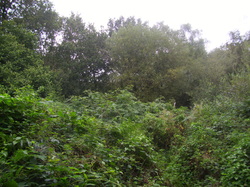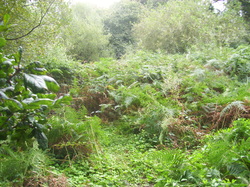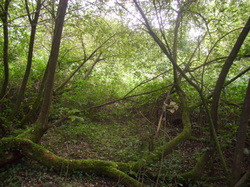- Home
- About
- Permaculture Design
- What is Permaculture?
- Diploma>
- Output 1 Making room for new beginnings; creating conscious space for good design>
- Output 2 Beginning the Design Process; Observing and interacting>
- Output 3 Stacking functions>
- Our current living space; Alex`s house and garden>
- Pete`s house; Turning a monster into an ally!
- Integrating permaculture design into my work place>
- Forest gardening at Margam Park...
- Raising Seth - supporting my son`s journey>
- Extracts from learning journal
- Process reflection
- Appendix
- Appendix ll. Tutor & Peer review
- Output 4 Small and slow solutions>
- Our current living space; Alex`s house and garden>
- Pete`s house; turning a monster into an ally!
- Integrating Permaculture design into my work place
- Forest gardening at Margam Park
- Raising Seth; Supporting our son`s journey.
- Getting to grips with technology!
- Extracts from learning Journal
- Process reflection
- Output 5, Accept and respond to feedback>
- Output 6
- Output 7
- Output 8
- Output 9
- Output 10
- Completed Designs>
- Gallery
- Contact
- Blog
- Links
- News
- Working page
Probably one of the most daunting aspects of tackling the garden...

Part of the jungle at the end of the garden
...initially for Alice and Jake is dealing with the regenerative growth of bramble, bindweed and bracken which along with willow, alder and birch scrub constitutes the last third of the garden.
The area is well suited to Forest gardening, with a rich layer of leaf litter already in place. Removing the under-story of bramble is the first perceived barrier to progress. Our objective is to create a relatively blank canvass for Forest gardening to begin in earnest. How do we achieve maximum benefit with minimum effort? What would be the ideal scenario?
The area is well suited to Forest gardening, with a rich layer of leaf litter already in place. Removing the under-story of bramble is the first perceived barrier to progress. Our objective is to create a relatively blank canvass for Forest gardening to begin in earnest. How do we achieve maximum benefit with minimum effort? What would be the ideal scenario?
- Ideally a magical method of clearing all of the under-story whilst also leaving Alice and Jake free to undertake other aspects of the garden project
- Preferably a method that relies on minimal use of oil and petrol
- We would also like to avoid the use of costly contractors
- It would also be useful to stack functions and obtain an additional yield by converting the unwanted biomass of bramble under-story into food
- The additional benefit of adding further organic matter to the soil during the process of removing the bramble is surely asking too much?
.

One of the more sunlit areas of the jungle
The answer to all of the above seems to be available in the form of running pigs through the area. Suitably housed, the right breed of pigs would root their way through the dense cover and root systems of the vigorous plant life, breaking through the soil surface and adding organic matter all the while in the form of pig dung. The pigs would have a wonderful time of it all rooting around in the jungle and converting it to a blank canvass ready for forest gardening. Happy pigs and happy gardeners. During the process, the chiefly inedible biomass of bramble, bindweed and bracken would of course be converted into quality bacon and pork.
Some research is called for regarding suitable hardy breeds. Let`s consider the desirable traits for the situation.
Some research is called for regarding suitable hardy breeds. Let`s consider the desirable traits for the situation.
.

A shadier, damper corner with goat willow
The ideal breed of pig would need to be hardy, tractable and docile. A low maintenance breed that is placid and content and less likely to possess escapology tendencies would suit our requirements perfectly. I ran the situation past permaculturists with experience of pigs and the first reply recommended large blacks.
So I did a little research. According to the British Pig association:-
"With its lop ears and long, deep body, the Large Black is Britain's only all-black pig. Extremely docile, and very hardy, it is ideally suited to simple outdoor systems. These characteristics, coupled with its black skin, make the Large Black ideal for a wide range of climatic conditions....Large Black sows are renowned as excellent mothers with exceptional milking ability. They are able to rear sizeable litters off simple rations and a placid temperament ensures they can be contained behind a single strand of electric fencing....Current demand for meat produced from traditional breeds of pigs raised extensively is now promoting a growth in the number of breeders keeping Large Blacks as this particular breed is much appreciated for its succulent taste and eating quality."
Sounds too good to be true. Described by a Mr Parkinson in 1810:-
"They are distinguished by their gigantic size, they are the largest of the kind I have ever seen, and as perfect a make as possible in pigs; their heads are large, with very long ears hanging down on each side of the face, so they can scarcely see their way."
I tracked down a local breeder who was very helpful, and the next stage is for us to visit him with the possibility of having pigs either in mid October or mid December. If we can be ready in time, the October option would be best.
So I did a little research. According to the British Pig association:-
"With its lop ears and long, deep body, the Large Black is Britain's only all-black pig. Extremely docile, and very hardy, it is ideally suited to simple outdoor systems. These characteristics, coupled with its black skin, make the Large Black ideal for a wide range of climatic conditions....Large Black sows are renowned as excellent mothers with exceptional milking ability. They are able to rear sizeable litters off simple rations and a placid temperament ensures they can be contained behind a single strand of electric fencing....Current demand for meat produced from traditional breeds of pigs raised extensively is now promoting a growth in the number of breeders keeping Large Blacks as this particular breed is much appreciated for its succulent taste and eating quality."
Sounds too good to be true. Described by a Mr Parkinson in 1810:-
"They are distinguished by their gigantic size, they are the largest of the kind I have ever seen, and as perfect a make as possible in pigs; their heads are large, with very long ears hanging down on each side of the face, so they can scarcely see their way."
I tracked down a local breeder who was very helpful, and the next stage is for us to visit him with the possibility of having pigs either in mid October or mid December. If we can be ready in time, the October option would be best.
